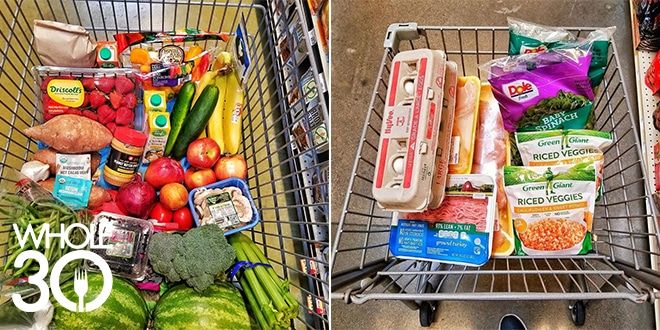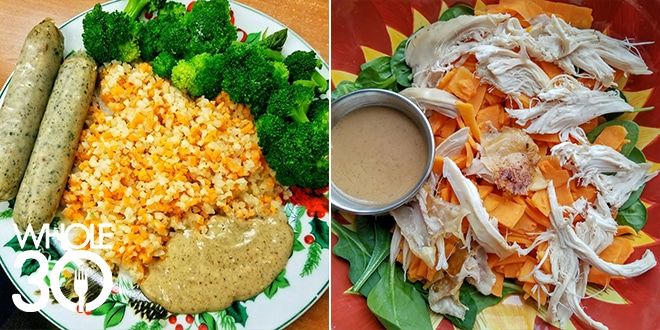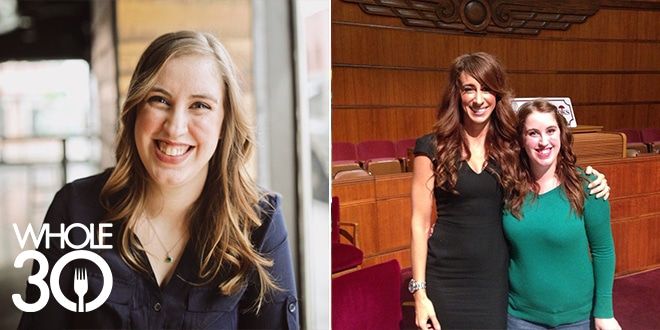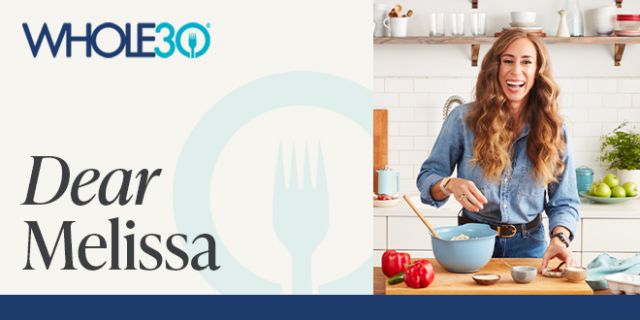By Victoria Singer
So, you want to do the Whole30, but it sounds like WAY more work than you can handle in addition to managing your chronic pain, disability or other disorder? You’re not alone. In fact, I felt the exact same way when my friend Amy encouraged me to do a Whole30. I told her that I didn’t feel like I’d have enough energy to do it, ever. You can read more about my I Am Whole30 story here.
I’m here today to give you some ideas on how to “save your spoons,” and still do a Whole30 by the book. (If you’re not familiar with spoon theory by Christine Miserandino, it’s a really helpful parable for understanding how it feels to live with chronic pain, illness, or disability. Check it out here.)
Normally when people talk about planning your Whole30, they’re talking about meal planning. You should definitely do that, and Whole30 has lots of resources to help, like their partnership with Real Plans, or page 196 of The Whole30. But I want to help create a different kind of Whole30 plan. My tips, developed from my personal experience, will help you conserve your energy while achieving Whole30 success.
Let someone else do what they can to help.
Don’t be afraid to ask for help and use services that make grocery shopping, meal prep or cooking easier.
Tip #1 Make your Whole30 a community affair.
Before you kick off your Whole30, consider hosting a meal prep party where a few of your friends come over to prepare different meals, and everyone leaves with a week of Whole30 meals prepared and ready to go. This article will help you plan your own meal prep party.
Tip #2 Online grocery shopping is my personal life-saver.
Walmart, Instacart, Hy-Vee, Whole Foods and other local grocery stores now offer versions of this service. Shop online and let someone else expend the energy running around the store for you.
Tip #3 Worried about sourcing compatible ingredients?
Instead of spending time at the grocery store reading ingredient labels, I do that work from the comfort of my home. I use grocery store websites to look up individual products, like bone broth or canned goods, and I rely heavily on Whole Kitchen Sink’s grocery lists by store.
Tip #4 Have a roommate, husband, significant other or kid?
See if they’ll put their hands to work in the kitchen doing the chopping (or whatever task is hardest for you personally) while you work on other parts of the recipe.
Tip #5 Place an order with a Whole30 Approved meal delivery service.
Perhaps you have the energy to make your own dinner each day, but you need help with breakfast and lunch. Or maybe it’s helpful to have a stash of Whole30 meals in the freezer for days that don’t go as planned. Check out Whole30 Approved meal delivery options, listed by state, here.
You don’t have to make it perfect.

Tip #6 Let go of the idea that your Whole30 has to look “Instagram pretty.”
If a recipe calls for freshly-spiralized sweet potato, but you and the spiralizer aren’t on speaking terms, buy pre-packaged sweet potato spirals or just microwave a sweet potato. Keep it simple and find shortcuts where you can.
Tip #7 It’s okay to use the pre-packaged frozen food, or Whole30 Approved products.
That’s what these brands are there for. You can now easily find Whole30 staple items like bone broth, mayo and ketchup, so there’s no reason to make these things from scratch if you don’t have the energy (or desire) to do so. Whatever helps you get good food into your body (and helps you follow the program) is fantastic.
Tip #8 Are dishes are killing you?
One pot, sheet pan and slow cooker meals are your new best friends. (And it’s okay to use disposable plates and cutlery if that extra step of washing will allow you to eat real food on bad days.) The Whole30 Fast and Easy and The Whole30 Slow Cooker books are both great resources for quick meals or cook-ahead meals.
Make your kitchen YOU-friendly.
Tip #9 Make design and layout tweaks that will make meal prep, cooking and cleaning easier.
Maybe this means you put a stool near the dishwasher, so that you can sit down when you’re unloading and reloading the dishwasher. You can get a non-slip mat to go under your cutting board if it’s hard to keep it stable and chop at the same time. Or maybe you simply move the knife block so that your knives are in easier reach.
Tip #10 Put easy-to-clean items in an easy spot.
I recommend organizing the cabinet that holds your pots and pans so that the easiest-to-clean pieces are right in front. If you don’t have an easy-to-clean skillet and pot, it may be worth investing in one. I recommend either this GreenPan set or this AllClad set.
Tip #11 Figure out how to sit while prepping.
If standing to prepare food is exhausting, sit at a table that’s a good height to do prep work. Bring your containers with you, so all you have to do is move them back to the countertop or fridge later rather than trying to carry veggies on a cutting board. (I’ve done that. That’s how I ended up with carrots all over my floor. I don’t recommend it.)
Tip #12 Use your gadgets to their fullest potential.
If you have a slow cooker, Instant Pot, or other kitchen gadget, learn how to use those gadgets to their fullest potential. For example, beyond cooking soups, stews and braises, the Instant Pot can also steam eggs and veggies, and can even cook an entire spaghetti squash. Check out this article for Instant Pot hacks.
Make friends with easy meals.

Tip #13 Focus on the Meal Planning Template
Learning new recipes can be really overwhelming. Remember, even the simplest of meals can still meet the requirements of the Meal Planning Template. Here’s some meal planning math: a compatible rotisserie chicken + a steamer bag of veggie rice + ghee or 1/2 of an avocado = a perfectly good meal with maybe 5 minutes of work. (And, you’ll have leftovers!)
Tip #14 Don’t underestimate the value of frozen veggies in steamer bags
My favorite steamer bags are the Green Giant riced veggies that can be found in the freezer section of most local grocery stores. I always have a couple of bags on hand.
Tip #15 Freeze your leftovers
Be your own best friend when you’re having a low energy or bad pain day. Set aside and freeze a few portions of leftovers when you make big batches of food. My favorites for this include:
- the Shepherd’s Pie on page 350 of The Whole30
- Meatballs from Elana’s Pantry
- Creamy Sausage and Potato Casserole from Whole Kitchen Sink
These ideas are offered from me to you as a springboard for you to launch from! You know your body and limitations best. Every person is different, and what works for me or others may not be exactly how you do it. Remember: as long as you’re following the Whole30 rules, you’re doing a Whole30. We’re proud of you and here to support you! Hope you found these tips helpful … Happy Whole30’ing!















